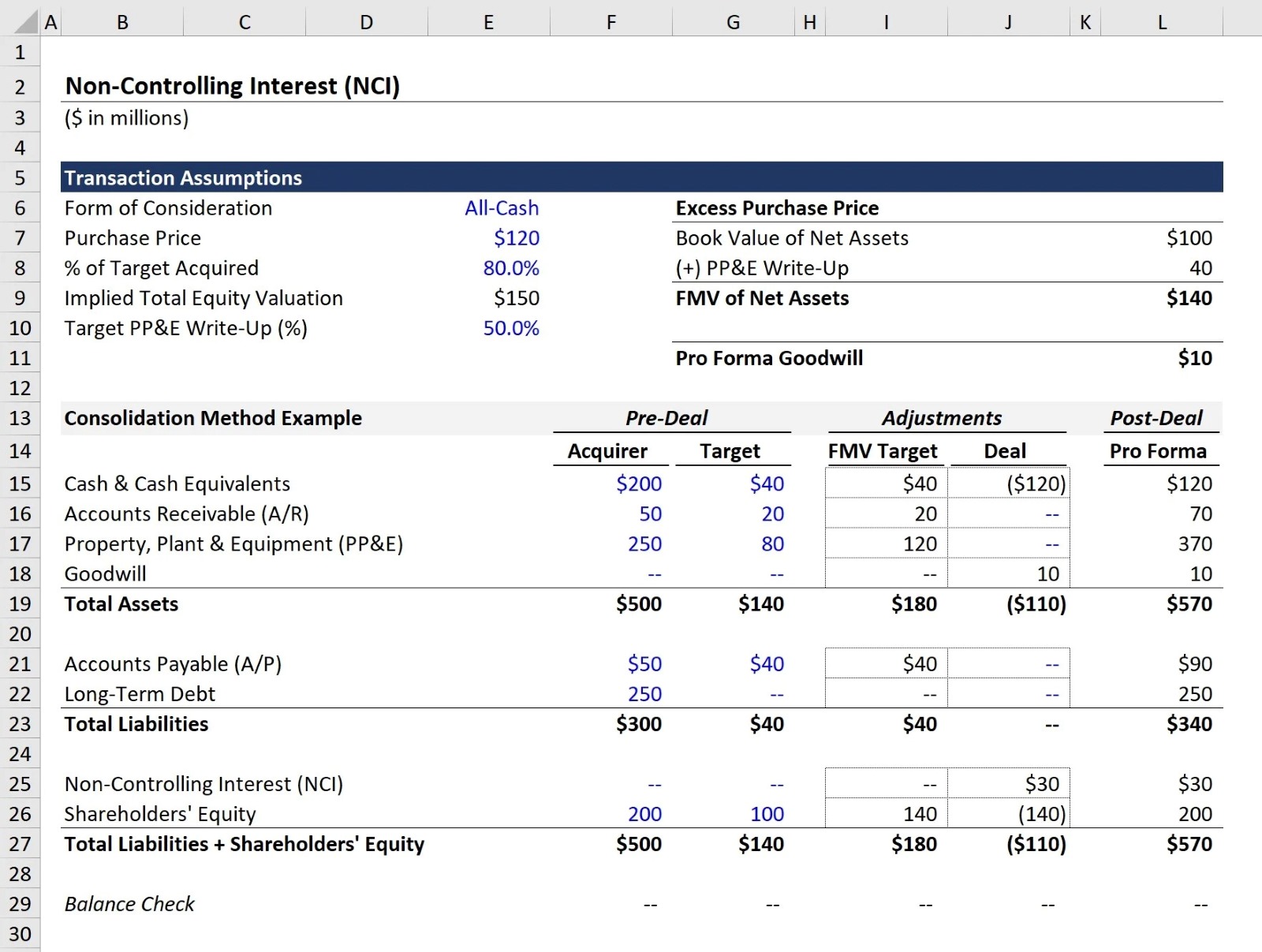Home>Finance>How Does Fraud Protection Work On A Credit Card?


Finance
How Does Fraud Protection Work On A Credit Card?
Published: February 19, 2024
Learn how fraud protection on credit cards works to safeguard your finances. Understand the key features and benefits of credit card fraud protection. Protect your financial security with effective fraud prevention measures. Discover how finance and fraud protection intersect.
(Many of the links in this article redirect to a specific reviewed product. Your purchase of these products through affiliate links helps to generate commission for LiveWell, at no extra cost. Learn more)
Table of Contents
Introduction
Credit cards have become an indispensable financial tool for millions of people worldwide. They offer convenience, security, and purchasing power. However, with the rise of digital transactions, the risk of fraudulent activities has also increased. This is where fraud protection on credit cards plays a crucial role in safeguarding consumers from unauthorized charges and identity theft.
Fraud protection is a set of measures and technologies designed to detect and prevent unauthorized or fraudulent transactions on credit cards. It provides consumers with peace of mind and financial security, knowing that their transactions are being monitored and protected against potential threats.
In the following sections, we will delve into the intricacies of fraud protection on credit cards, exploring its various types, how it works, and the benefits it offers to cardholders. Understanding the mechanisms of fraud protection is essential for consumers to make informed decisions and utilize their credit cards with confidence. Let's embark on this journey to unravel the mysteries of fraud protection and gain insights into its significance in the realm of personal finance.
Understanding Fraud Protection
Fraud protection on credit cards encompasses a range of security measures and protocols implemented by card issuers to mitigate the risks associated with unauthorized transactions and identity theft. It serves as a shield, fortifying the financial well-being of cardholders in the digital age where cyber threats loom large.
One of the fundamental aspects of understanding fraud protection is recognizing the diverse forms of fraudulent activities that can target credit card users. These may include unauthorized charges, counterfeit card usage, online payment fraud, and identity theft. By comprehending the potential threats, consumers can appreciate the significance of robust fraud protection mechanisms.
Moreover, fraud protection extends beyond mere transaction monitoring. It involves sophisticated algorithms, machine learning, and real-time analysis to identify patterns indicative of fraudulent behavior. This proactive approach enables early detection and prevention of unauthorized activities, thereby safeguarding the financial interests of cardholders.
Understanding the nuances of fraud protection also entails recognizing the collaborative efforts between card issuers, merchants, and regulatory authorities. Cooperation among these stakeholders is vital in establishing a comprehensive ecosystem for combating fraud, encompassing measures such as EMV chip technology, tokenization, and two-factor authentication.
By gaining a deeper understanding of fraud protection, consumers can make informed decisions regarding their credit card usage, evaluate the security features offered by different card issuers, and adopt best practices for minimizing the risk of falling victim to fraudulent activities. This knowledge empowers individuals to navigate the digital financial landscape with confidence and prudence.
Types of Fraud Protection
Fraud protection on credit cards encompasses a diverse array of safeguards and technologies aimed at thwarting unauthorized transactions and preserving the integrity of cardholders’ financial assets. Understanding the different types of fraud protection mechanisms is essential for consumers to grasp the multifaceted approach employed in securing their credit card transactions.
- Transaction Monitoring: This form of fraud protection involves real-time scrutiny of credit card transactions to detect anomalies or suspicious activities. Advanced algorithms analyze transaction patterns and alert the card issuer or cardholder in the event of potentially fraudulent behavior.
- EMV Chip Technology: EMV (Europay, Mastercard, and Visa) chip-equipped credit cards enhance security by generating unique transaction codes for each purchase, making it exceedingly difficult for fraudsters to replicate card information for unauthorized use.
- Tokenization: Tokenization replaces sensitive card data with unique tokens, rendering the actual card details inaccessible to unauthorized parties. This technology adds a layer of protection when making digital or mobile payments, reducing the risk of data theft.
- Two-Factor Authentication: Some credit card transactions require two-factor authentication, wherein the cardholder must provide additional verification, such as a one-time code sent to their mobile device, to authorize the transaction. This supplementary layer of security deters unauthorized usage.
- Fraud Alerts: Card issuers may offer fraud alert services, notifying cardholders of suspicious activities via text, email, or automated phone calls. Prompt awareness empowers cardholders to take swift action in the event of potential fraud.
These diverse types of fraud protection collectively form a robust defense mechanism, bolstering the security of credit card transactions and instilling confidence in consumers regarding the safety of their financial dealings. By leveraging these advanced technologies and proactive measures, card issuers endeavor to stay ahead of evolving fraud tactics, ensuring the protection of cardholders’ sensitive financial information.
How Fraud Protection Works
Fraud protection on credit cards operates through a combination of proactive measures, advanced technologies, and vigilant monitoring to detect and prevent unauthorized transactions. The seamless functioning of fraud protection mechanisms is pivotal in maintaining the integrity of the cardholder’s financial transactions and thwarting potential fraudulent activities.
One of the primary ways fraud protection works is through real-time transaction monitoring. Advanced algorithms analyze transaction patterns, spending behavior, and geographic indicators to identify anomalies that may signify fraudulent activities. Upon detecting suspicious transactions, the card issuer or financial institution promptly intervenes, either by placing a temporary hold on the card or reaching out to the cardholder for verification.
EMV chip technology, integrated into modern credit cards, plays a pivotal role in fraud protection. When a chip-equipped card is used for a transaction, it generates a unique code for that specific purchase, making it exceedingly challenging for fraudsters to replicate the card information for unauthorized use. This technology adds a layer of security, reducing the risk of counterfeit card usage.
Tokenization is another integral component of fraud protection, particularly in the realm of digital and mobile payments. By replacing sensitive card data with unique tokens, tokenization ensures that the actual card details remain inaccessible to unauthorized entities, mitigating the risk of data theft and unauthorized usage.
Furthermore, fraud protection leverages two-factor authentication to fortify the security of credit card transactions. In instances where additional verification is required, such as a one-time code sent to the cardholder’s mobile device, two-factor authentication adds an extra layer of protection, deterring unauthorized usage and enhancing transaction security.
By integrating these multifaceted fraud protection measures, card issuers and financial institutions strive to create a robust defense mechanism against fraudulent activities, safeguarding the financial interests of cardholders and fostering a secure environment for digital transactions.
Benefits of Fraud Protection
Fraud protection on credit cards offers a myriad of benefits that extend beyond mere security, encompassing financial peace of mind, consumer confidence, and streamlined dispute resolution processes. Understanding the advantages of robust fraud protection is instrumental in appreciating its role in fortifying the integrity of credit card transactions and preserving the trust of cardholders.
One of the primary benefits of fraud protection is the mitigation of financial losses resulting from unauthorized transactions. By promptly detecting and preventing fraudulent activities, card issuers and financial institutions shield cardholders from bearing the financial burden of unauthorized charges, thereby preserving their financial well-being and minimizing the impact of fraudulent incidents.
Moreover, fraud protection instills confidence in consumers, empowering them to utilize their credit cards for online and in-person transactions without undue apprehension regarding potential fraud. This confidence fosters a seamless and secure payment experience, contributing to the widespread adoption of digital payment methods and e-commerce transactions.
Another significant benefit of fraud protection is the expedited resolution of disputed transactions. In the event of unauthorized charges or fraudulent activities, cardholders can rely on the robust dispute resolution mechanisms facilitated by fraud protection services. This streamlined process alleviates the stress and inconvenience associated with disputing unauthorized transactions, ensuring swift resolution and the restoration of the cardholder’s financial standing.
Furthermore, fraud protection engenders a sense of trust and reliability in the credit card ecosystem, bolstering the reputation of card issuers and financial institutions. By prioritizing the security and well-being of cardholders, these entities cultivate a loyal customer base and enhance their standing in the competitive financial landscape.
By reaping these multifaceted benefits, cardholders can navigate the digital financial domain with confidence, knowing that their transactions are safeguarded by robust fraud protection measures. This assurance not only enhances the overall consumer experience but also contributes to the sustainable growth and evolution of digital payment platforms and credit card usage.
Conclusion
Fraud protection on credit cards stands as a formidable bulwark against the ever-present threat of unauthorized transactions and identity theft in the digital age. Through a multifaceted approach encompassing advanced technologies, vigilant monitoring, and collaborative efforts, fraud protection serves as a linchpin in preserving the financial security and confidence of cardholders.
Understanding the intricacies of fraud protection is paramount for consumers, empowering them to make informed decisions and leverage the security features offered by various card issuers. By recognizing the diverse types of fraud protection, including transaction monitoring, EMV chip technology, tokenization, and two-factor authentication, individuals can navigate the digital financial landscape with prudence and assurance.
The benefits of robust fraud protection extend beyond security, encompassing financial peace of mind, consumer confidence, and streamlined dispute resolution processes. By mitigating financial losses, instilling trust, and expediting dispute resolutions, fraud protection contributes to a seamless and secure payment experience, fostering the widespread adoption of digital payment methods and e-commerce transactions.
As the realm of digital transactions continues to evolve, fraud protection remains a cornerstone of the credit card ecosystem, safeguarding the financial interests of cardholders and fortifying the trust and reliability of card issuers and financial institutions. By embracing innovative technologies and proactive measures, the financial industry endeavors to stay ahead of evolving fraud tactics, ensuring the sustained integrity and security of credit card transactions.
In conclusion, fraud protection on credit cards serves as a beacon of security and trust, empowering consumers to embrace the convenience and potential of digital transactions with confidence. By fostering a secure and resilient financial environment, fraud protection paves the way for a future where financial transactions are characterized by safety, reliability, and peace of mind.














